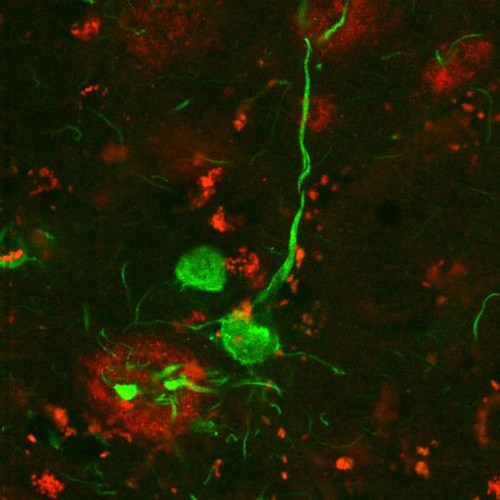Unraveling the Web of Alzheimer’s Disease
In January 2010, Dr. Cheryl Wellington and her team of researchers at the University of British Columbia made great strides by determining a potential treatment to relieve the loss of brain function caused by Alzheimer’s disease.
Alzheimer’s disease (AD) is the most common form of dementia. It is an incurable disease that progressively deteriorates mental function and causes memory loss as well as an inability to effectively communicate, reason and use one’s problem solving skills. Currently, over 26.6 million people suffer from it worldwide.
From a scientific point of view, Alzheimer’s is caused by an accumulation of misfolded proteins in the brain. When these misfolded proteins group together, they produce plaques. As a result, these plaques can cause swelling and damage to the brain, which leads to the symptoms seen in Alzheimer’s patients. In the most severe cases, not only does AD inhibit mental function, but it also interferes with how the body regulates its basic functions (e.g. respiration and heart rate), and this can cause death.

AD-2 by Flickr user Zerd: The image above illustrates plaques (red) and tangles (green) in a brain affected by Alzheimer’s disease.
In the podcast below, Dr. Cheryl Wellington gives more insight into Alzheimer’s and how it progressively disables mental function in a patient. She also outlines the steps that people can take in their mid-life to help prevent the onset of the disease.
Audio clip: Adobe Flash Player (version 9 or above) is required to play this audio clip. Download the latest version here. You also need to have JavaScript enabled in your browser.
As mentioned in the podcast, there are currently no drugs on the market that can stop the disease in its entirety. However, this is where Dr. Wellington’s research fills a knowledge gap and sets the foundation to find a potential drug that can be marketed to all AD patients.

Wide Brain by Flickr user Enrique T: An image illustrating the plaque deposits present in an AD mouse.
In this video, we introduce Cheryl’s research, explain the drug that she works on and illustrate how she uses mice models to determine the drug’s effect on Alzheimer’s disease.
[youtube=https://www.youtube.com/watch?v= q2IZW1fvz2M&w=640&h=385]
One of the major difficulties that Alzheimer’s presents is its target population: a majority of people diagnosed with AD are over 65 years old. For this reason, the sufferers heavily rely on caregivers and close relatives for assistance. Consequently, the disease can create extreme stress and hardships within a family and financial burdens on our healthcare system. To this end, even though Cheryl’s research is promising, it is important to remember that Alzheimer’s isn’t part of normal aging: steps can be taken to prevent this disease altogether. By maintain a healthy lifestyle and exercising on a regular basis (especially in your 40’s and 50’s), you can diminish the likelihood of Alzheimer’s taking root in the brain and starting the plaque-building process. But don’t wait until your 40’s to start exercising! Develop these habits at an early age – you’ll thank yourself later!
Further reading:
http://www.cfri.ca/our_research/researchers/search_researchers/researcher_detail.asp?ID=146
Dr. Wellington’s original research paper:
http://www.jbc.org/content/285/44/34144.short
December 4th, 2011 at 1:49 pm
I’m really impressed with the excellent narration in both the audio and video pieces and how they complement each other. The video narration matches up so well with the images and additional footage you decided to use. Nice editing!
December 5th, 2011 at 12:15 am
The images on the post, and video are really cool.
January 18th, 2012 at 1:51 pm
Thanks for the take-home message about exercising. My mother has been diagnosed with Alzheimer’s, so of course I’m worried about succumbing in my later years. When people I know say they don’t have time to exercise, I usually suggest to them that any time they believe they are saving is a false economy.
January 9th, 2016 at 3:31 pm
spammer
SCIE 300 Communicating Science » Blog Archive » Unraveling the Web of Alzheimers Disease
August 30th, 2017 at 12:53 pm
exit
SCIE 300 Communicating Science
June 22nd, 2018 at 1:25 am
vat lieu nha khoa tphcm
SCIE 300 Communicating Science
September 10th, 2018 at 8:41 am
fuji plus gia Si
SCIE 300 Communicating Science
December 27th, 2018 at 3:42 pm
nk luck
SCIE 300 Communicating Science
December 11th, 2019 at 11:35 pm
Vat lieu nha khoa HH
SCIE 300 Communicating Science » Blog Archive » Unraveling the Web of Alzheimer’s Disease